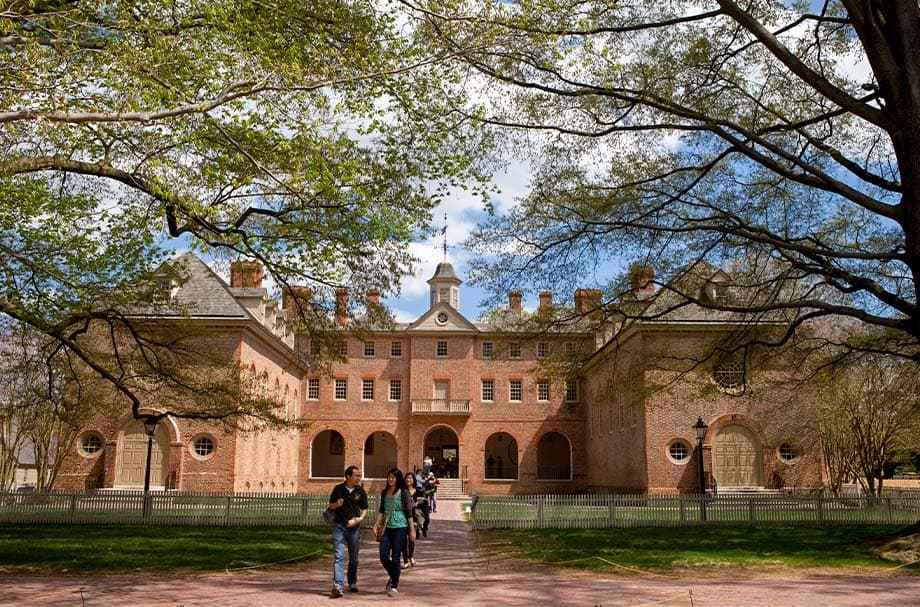History of the Wren Building
This short history was prepared for couples who want to include some historical notes on their wedding programs.
 The Sir Christopher Wren Building is the oldest college building in the United States and the oldest of the restored public buildings in Williamsburg. It was constructed between 1695 and 1699, before the city was founded, when the capital of the colony of Virginia was still located at Jamestown, and the tract of land that was to become Williamsburg was populated by simple timber buildings and known as "Middle Plantation."
The Sir Christopher Wren Building is the oldest college building in the United States and the oldest of the restored public buildings in Williamsburg. It was constructed between 1695 and 1699, before the city was founded, when the capital of the colony of Virginia was still located at Jamestown, and the tract of land that was to become Williamsburg was populated by simple timber buildings and known as "Middle Plantation."
Chartered on February 8, 1693, by King William III and Queen Mary II of England, the new college was to consist of three schools: a classical grammar school in which boys about twelve to fifteen years of age could prepare for college; the philosophy school (the collegiate curriculum); and the divinity school, where young men who had completed their studies in the philosophy school would be prepared for ordination in the Church of England.
During the colonial period, the Wren Building accommodated all the activities of the college. It housed students and contained classrooms, a library, a refectory, a faculty room, as well as living quarters for the president and masters. Today, as the Wren Building enters its fourth century, it continues in use as an academic building with faculty offices on the third floor and classrooms throughout the building.
Known in the eighteenth century simply as "the College," and later as the "Main Building," William & Mary's oldest and most cherished building was renamed in 1931 for the famous British architect, Sir Christopher Wren, to whom an eighteenth-century author attributed the design.
Fire has gutted the Wren Building three times — in 1705, 1859, and 1862 — and each time it has been repaired with the original exterior walls incorporated into the reconstruction. It was restored to its colonial appearance in 1928–31 through the generosity of John D. Rockefeller, Jr.
There was a close official connection between William & Mary and the Church of England during the colonial period, and William & Mary students would have begun and ended each day with services in the chapel. After the American Revolution, William & Mary maintained an unofficial relationship with the American Episcopal Church until the university became a state institution in 1906. Today the chapel continues to be used for student worship services of various faiths, as well as for music recitals, solemn induction ceremonies, and alumni weddings.
The design of the chapel is similar to that of many collegiate chapels in Great Britain. The paneling is of native pine and walnut. Chapel includes several antique pieces: the English eighteenth-century chamber organ, the chandelier, and the royal arms of Kings George I and II, which are displayed on the front of the gallery, a reminder of the close connection between Church and State during William & Mary's early years.
Among those buried in the crypt under the Chapel are several distinguished Virginians — Sir John Randolph, his sons John "the Tory" and Peyton, Bishop James Madison — as well as Lord Botetourt, the beloved colonial governor, a statue of whom can be seen in front of the Wren Building.
 Skip to main content
Skip to main content
